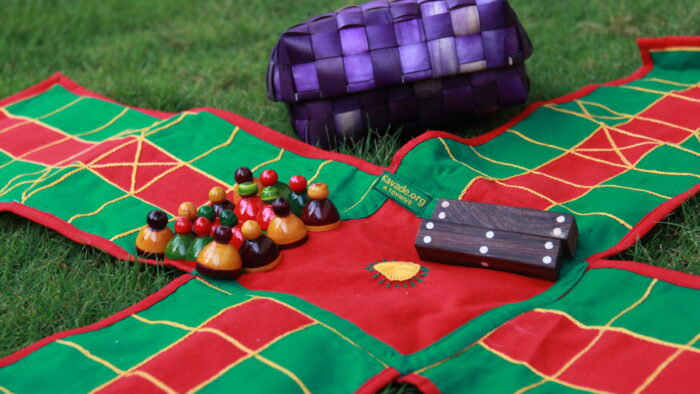Cultures and traditions are living ecosystems. There is much to be learnt through respect and observation of indigenous cultures and traditions. In the last few centuries, we have been witnessing the growing hazard of homogenization of cultures - similar livelihoods, identical constructions, eating habits, healthcare, consumer goods, and entertainment. As Helena Norberg Hodge aptly says “Diverse cultures from Alaska to Australia have been overrun by the industrial monoculture. The spread of industrial monoculture is a tragedy of many dimensions. With the destruction of each culture, we are erasing centuries of accumulated knowledge, and as diverse ethnic groups feel their identity threatened, conflict and social breakdown almost inevitable follow”.
If culture were placed at the heart of development policies, we will assuredly be making way for an ecosystem-centered, humanitarian and inclusive development. India is one of the oldest civilizations around the world, throbbing with a vast, rich and diverse cultural heritage. The comprehension of this cultural heritage maybe a colossal task, but it is imperative that we preserve it for generations to come. Among the many resilient features of this heritage, one that is largely undocumented is indigenous games. A study of the world’s popular games reveals their deep roots in ancient India.

Relief of Shiva Parvathi playing dice, Rani Durgavathi Museum Jabalpur, 10thC Micaela Soar “Shiva and Parvati at play"
Mythological and artistic depictions, paintings and cave sculptures portray the games played between Lord Shiva and Parvathi, Lord Krishna and Radha, Pandavas and Kauravas, Nala and Damayanthi. Excavations at historic places and references from scriptures have brought to light, play at various time periods in Indian history. While we have material evidence of game pieces excavated from the Indus valley regions (2000 bc), the earliest literary evidence is the ‘gambler’s hymn’ in the Rigveda (e.g. Ṛgveda 10.34). Verses from Manusmriti imply that gambling was prohibited, whereas writings of other lawmakers such as Yajnavalkya, Vasistha, Narada, Kautilya (Chanakya) suggest that gambling was allowed under the state’s supervision. Elaborate rituals and spells were prescribed to ensure success in the game. Even a casual perusal of the ancient games makes one aspect clear, game play was not a frivolous activity. The early games were fundamentally sacred, infused with the philosophy of life and served as metaphors for life. The games reflected the spiritual, religious, social and cultural tenets of the society. (life scenarios – daily activities, belief systems, life and death customs, dangers of immoral behavior, battles, bloodshed and much more.)
The metaphorical use of games blurred the line between reality and gameplay and emerged as a quick reference guide during challenging times. In this reading, my attempt is to draw attention to extraordinary games of Indian origin that have been adapted & become household games, globally.
1. Paramapada sopanapatam: Having several variants within the Indian subcontinent and known diversely as paramapadasopanapatam, gyan chaupar, mokshapatam, or vaikuntapali, the game has gained popularity glaobally as snakes and ladders. The original game remarkably integrated the core of Sanatana dharma’s beliefs - karma and moksha! The game is believed to have been created in the 13th century by the poet saint Gyandev, although there are certain references which take the game back to 2nd century BC. The earliest evidence of the game board is an 84-square gyan chaupar cloth board from Rajasthan dated 1735 CE (Andrew Topsfield; The art of Play, 84 sq Gyan chaupar Board). Each variant appears to have one common goal: lead seekers towards the Ultimate knowledge, Enlightenment or Salvation.

84-square gyan chaupar cloth board from Rajasthan dated 1735 CE, Andrew Topsfield

Paramapada sopanapatam with Telugu and Tamil script, print on paper, undated: Kavade

84 sq Lokapurusha board, dt 1834, calico museum of textiles, Ahmedabad, Andrew Topsfield
Varying Game Nomenclatures and their Meaning:
Paramapada sopanapatam: Steps to salvation
Moksapatam: Board of enlightenment
Gyan Chaupar: Game of knowledge
Vaikuntapali: Steps to Vaikuntha
The snakes and ladders could be seen as metaphorical representations of Maya strewn in the seeker’s path towards enlightenment. The snakes represented the human vices, ladders the virtues and their varying sizes symbolised the potency of human sins and morality. The game squares had karmic terminologies written in Devanagari, Tamil, Telugu and/or Persian scripts along with depictions of various lokas, vices and virtues. The top most row denoted the higher realms of heaven and beyond, Kailasa and Vaikunta, the abodes of Lord Shiva and Lord Vishnu respectively.
The aim of the game was to reach the winning Vaikuntha square set interestingly in the centre of the top row rather than at the end of that row. A snake placed at the end of the top row suggested the end of one sinful life followed by rebirth filled with optimism for the seeker to reach salvation. (Karma principle). The other notable variant is the Jain 84 square board, which is conceived in the form of a Lokapurusha or Cosmic Man, whose protruding head contained the heavenly zones, with depictions of torments of hell below the playing area (Andrew Topsfield; The art of Play, 84 sq Gyan chaupar Board).
It is possible to infer from this elaborate game setup the emphasis on leading a virtuous, devout life. While good deeds or virtues take one closer towards goal (Salvation here), bad actions or vices takes one farther away from success. It brings alive the implicit Sanatana Dharma belief that a steady effort to discard vices and progress through virtuous acts will lead one towards the ultimate liberation from the bonds of Karma and thereof towards enlightenment.
It would be of interest to mention here the development of a 101 sq Islamic version of the game, possibly during the Moghul period. Emulating the heavens in the older formats, the Islamic version had Allah positioned at 101 and Shaitan (the devil) at 100 signifying danger lurking close to attainment of salvation.
A wide range of game board size variants have been documented, starting from 72 squares, to some versions with 84, 132 squares and few even as big as 380 squares allowing for higher unravelling of spiritual knowledge. Most of the early boards were ornately decorated with birds, animals, flowers and other elements of nature. In comparison, the modern day snakes and ladders popularised by the British during the 1980s, is a plain 100 square game, stripped bare of its original philosophical essence. Players race across the game board based on the roll of dice, to reach the final square of 100; racing ahead through ladders and plummeting down due to snakes. This has reduced the game interest to much younger audiences today as against the ancient versions which had much to contribute to an individual and society’s development.
- Dice games: Pachisi in focus
Pachisi, described as the National game of India, was probably one of the earliest ancient games to reach the west. With many modern versions of the game, this is certainly one of the most popular board games in the entire world. Parchís is popular in Spain and northern Morocco; Parqués is its Colombian variant. Parcheesi, Sorry! and Ludo are among the many westernized commercial versions of the game. Parcheesi, the American game acknowledges its Indian heritage by naming it 'Parcheesi, the Royal Game of India’.
Pachisi appears to have been in exisitence for most of the past two millennia, although written evidence exists only from the 15th or 16th C. People from different parts of India have referred to this game diversely as Chaupar, Pagade, Dayakattam. The mughal emperor Akbar played the game of Pachisi in a truly regal manner, which is described in the book ‘Ain-i-Akbari’; 16th C. The larger than life sized game set into his court in Fatehpur sikhri is a testament to the emperor’s love for the game. Mysore scion of the Wodeyar family, Mummadi Krishnaraj Wodeyar (19th C) was a connoisseur of board games who reinvented several ancient games. He modified the 4-handed pachisi game to six, eight and twelve handed gameboards with spiritual implications; all of them renown for their ingenuity. Lord Shiva and Parvati playing a dice game (commonly thought to be chaupar) is a popular motif in Indian sculpture going back at least as far as the Gupta period in the 4th century CE (Soar. M., The art of play: 53). The game believed to be played during Deepawali festival (as described in Shivapurana) is considered auspicious and is now customary to play a game of Pachisi as part of the festivities.
A piece that is essential in most board games today, the dice referred to as aksa (possessing eyes) in Sanskrit, was the basis of humanity’s oldest games. The earliest dice throwers weren’t gamers, though - they were religious shamans who used astragali, ankle bones as dice. While divination & gambling associations to dice play are noted, divine & esoteric connotations have also been well established.
Lord Shiva and Parvathi represent the interconnectedness of purusha prakrithi; consciousness that exists in the web of matter; one that is non existent without the other. In the game of dice, Shiva’s triumphant and repeated loss of the game to Parvathi is a metaphorical representation of joyous detachment from life’s experiences. The manifold interplay of divinity and dice hints at dice games being representative of the challenges an individual faces during one’s lifetime and emerges as a tool to impart higher knowledge.
References: 1. Balambal .V (2005), Folk Games of Tamilnadu: The CP Ramaswamy Aiyar Foundation, p. 81-99.
2. Topsfield, Andrew (2006) "Instant Karma: The Meaning of Snakes and Ladders" in Andrew Topsfield (ed.) The Art of Play: Board and Card Games of India. Mumbai: Marg Publications, pp. 75-89.
3. Schmidt, Jacob – Madsen, stud Phil. Road Maps for the Soul - a critical reading of five North Indian 72-square gyān caupaṛ boards: The Matheson Trust





